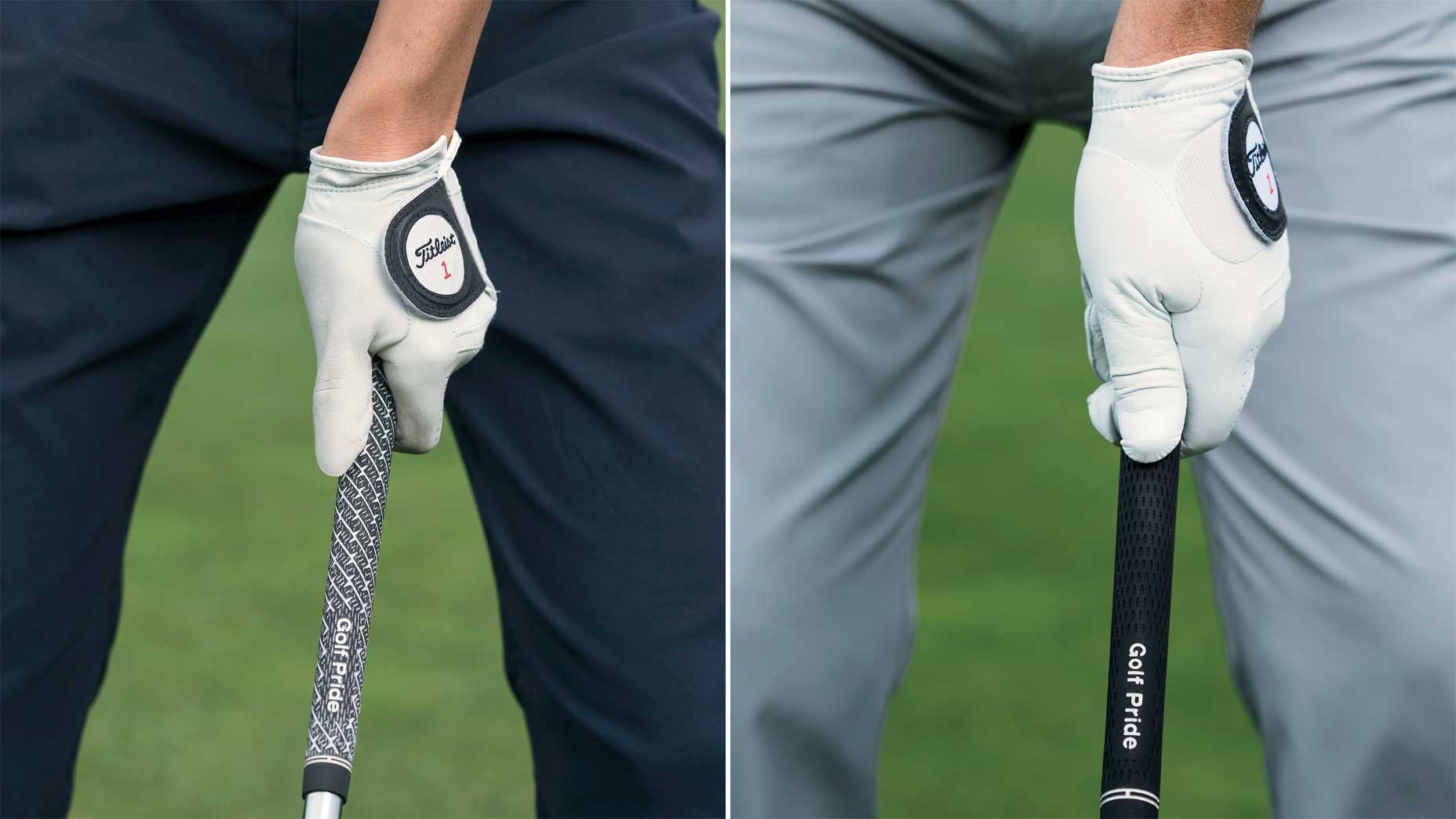

Every golfer can have a great swing, no matter their age.
Getty Images
On the driving range at Westchester CC, where I teach, I help two kinds of students: 1) athletic, young golfers like my junior student Steven Lee, pictured in this article, and 2) avid, 50 years and older rec golfers (represented in this story by yours truly). Both of these demographics come with their own advantages and limitations, necessitating different subsets of advice.
Depending on which category you fall into, here’s how you can adjust your swing and start playing the best golf of your life.
1. Match your posture to your age

Christian Hafer
With more hours working hard behind a desk, older golfers should embrace a more relaxed posture — a “curved” back here is just fine. Just make sure to keep your chin up, which will straighten your thoracic spine without adding tension.
Junior golfers don’t have to worry about this (not yet, anyway). Stick your backside out, keep your back straight, from your belt line to your shoulders, and let your arms hang straight down.
2. Match your stance to your age

Christian Hafer
Body rotation is a good thing, but too much of it presents its own set of issues depending on your age. Junior golfers can twist their body more easily, so they should use more of a PGA Tour setup: wider stance with the trail foot more pigeon-toed to prevent overturning on the backswing.
Older golfers need all the turn they can get! Opt for the setup you see on the PGA Tour Champions: narrow stance with both feet flared outward. Two proven rotation boosters.
3. Match your backswing to your age

Christian Hafer
Younger golfers are flexible, but that extra mobility can often lead to a loss of stability and problems with repeatability. It’s why junior golfers should feel “shorter” going back and focus on staying centered as they twist into the ground.
Older golfers have the opposite problem: They don’t turn enough! Even with your new setup, try to rotate as much as your upper body can muster as you swing to the top. Let the weight of the clubhead hinge your wrists as you “set” the club behind you.
4. Match your downswing to your age

Christian Hafer
Junior golfers’ explosive body motion and rotation often cause their arms to get “stuck” behind them when coming down. That can lead to big blocks and high hooks. To counteract this, young players should feel like their arms “outrace” their body to the ball.
Older golfers: You tend to “throw” the club from the top, another consistency bugaboo. Opposite of the junior player, feel like your hips lead the charge and let your arms lag behind.
5. Match your grip to your age

Christian Hafer
No matter your age, the key is to match up your moves, and it starts with your grip. With their ability to rotate their upper and lower bodies faster on the downswing, which can force the clubface to open, juniors should opt for a stronger glovehand grip.
Older players should go more neutral with their glove hand, with the thumb placed on top of the handle. This matches up better with a slower body speed and will allow you to fully release the club without fear of hooking the ball.
Gary Weir is the director of instruction at Westchester CC in Rye, N.Y.









